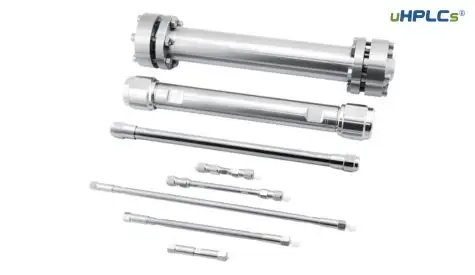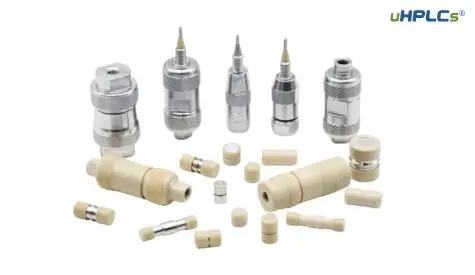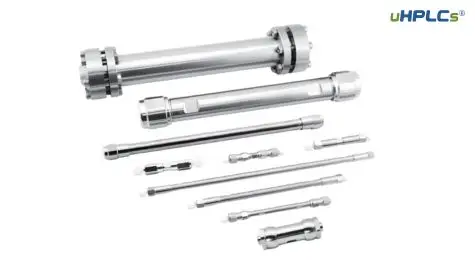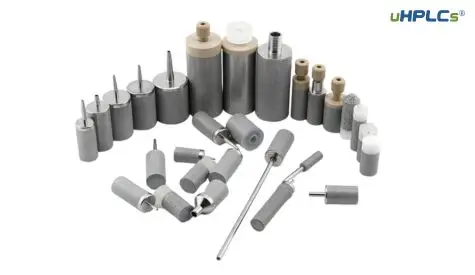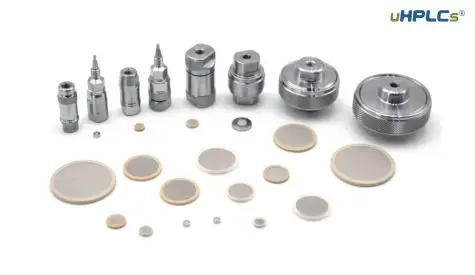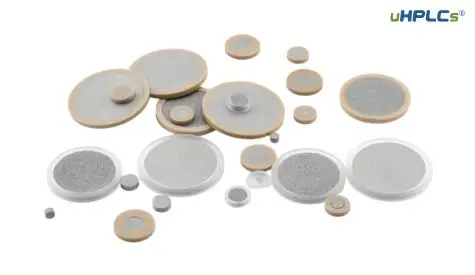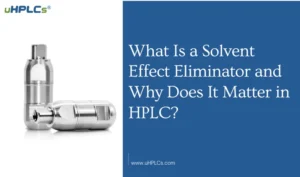What is HPLC?
HPLC is a powerful analytical technique used to separate and identify the components of a complex mixture. The technique involves passing a liquid sample through a column packed with a stationary phase material. The different components of the sample interact with the stationary phase material in different ways, allowing them to be separated and identified.
Main Features of HPLC
- Accuracy and Precision: HPLC systems are highly accurate and precise, allowing for reliable and reproducible results.
- Sensitivity: HPLC systems are sensitive enough to detect even trace amounts of impurities or degradation products.
- Flexibility: HPLC systems are flexible, allowing for a wide range of applications and methods.
- Ease of Use: HPLC systems are easy to use, with intuitive software and user-friendly interfaces.
- Reliability: HPLC systems are reliable, with low downtime and minimal maintenance requirements.
- Regulatory Compliance: HPLC systems meet regulatory compliance requirements, including those set forth by the FDA and other governing bodies.
These key features make HPLC systems an essential tool for pharmaceutical researchers and developers, as well as for a wide range of other scientific applications.
Applications of HPLC Analyze
- Drug Discovery and Development: HPLC is used to identify and quantify active pharmaceutical ingredients (APIs), characterize the purity and stability of drugs, and optimize the formulation and manufacturing process.
- Environmental Analysis: HPLC is used to detect and quantify pollutants and other contaminants in water, soil, and air samples.
- Forensic Science: HPLC is used to detect and quantify drugs, metabolites, and other substances in biological samples.
- Food and Beverage Analysis: HPLC is used to detect and quantify vitamins, amino acids, and other nutrients and contaminants.
- Quality Control: HPLC is used in quality control to verify the identity, purity, and potency of pharmaceuticals, as well as to detect any impurities or degradation products.
What is UHPLC?
UHPLC is a more advanced version of HPLC that uses smaller particle sizes in the column packing material and higher pressures to achieve faster and more efficient separations. UHPLC is capable of achieving faster run times and higher resolution separations than HPLC.
Features of UHPLC
- Faster Analysis Times: UHPLC uses smaller particle sizes in the column packing material and higher pressures to achieve faster and more efficient separations than HPLC.
- Higher Resolution: UHPLC is capable of achieving higher resolution separations than HPLC, making it a better choice for complex samples.
- Higher Sensitivity: UHPLC is generally more sensitive than HPLC, making it a better choice for applications that require low-level detection.
- Higher Cost: UHPLC is more expensive than HPLC, due to the higher pressure requirements and specialized equipment needed.
- Compatibility: It’s important to consider the compatibility of your sample with UHPLC, as some samples may not be well-suited for the higher pressures and resolution of UHPLC.
Overall, UHPLC offers many advantages over HPLC, but it is also more expensive and may not be necessary for all applications. When choosing between HPLC and UHPLC, it’s important to consider factors such as analysis time, sample type, sensitivity, cost, and compatibility.
When using UHPLC, it is important to choose materials that can withstand the high pressure and flow rates involved in the technique. Some materials that are commonly used in UHPLC include stainless steel, titanium, and PEEK (polyether ether ketone).
Applications of UHPLC include:
- Pharmaceuticals: UHPLC is used in drug discovery and development, as well as in quality control and regulatory compliance testing.
- Environmental Analysis: UHPLC is used to detect and quantify contaminants in water, soil, and air samples.
- Food and Beverage Analysis: UHPLC is used to detect and quantify nutrients and contaminants in food and beverage samples.
- Forensic Science: UHPLC is used to detect and quantify drugs and other substances in biological samples.
- Materials Science: UHPLC is used to characterize and analyze materials, such as polymers and nanoparticles.
- Clinical Diagnostics: UHPLC is used in clinical diagnostics to detect and quantify biomarkers and other indicators of disease.
These are just a few examples of the many applications of UHPLC. With its high resolution, sensitivity, and speed, UHPLC is a powerful analytical technique that can be used in a wide range of scientific fields.
How to Choose Between HPLC and UHPLC?
When choosing between HPLC and UHPLC, there are several factors to consider, including:
Analysis Time
One of the most significant advantages of UHPLC is its ability to achieve faster analysis times than HPLC. If you need to analyze a large number of samples quickly, UHPLC may be the better choice.
Sample Type
The type of sample you are analyzing can also impact which technique is best for your needs. If you are working with complex samples, such as biological fluids or environmental samples, UHPLC may be the better choice due to its higher resolution and sensitivity.
Sensitivity
UHPLC is generally more sensitive than HPLC, making it a better choice for applications that require low-level detection.
Cost
While UHPLC offers many advantages over HPLC, it is also more expensive. If cost is a concern, HPLC may be the better choice.
Compatibility
Finally, it’s important to consider the compatibility of your sample with each technique. Some samples may be better suited for HPLC, while others may require the higher resolution and sensitivity of UHPLC.
If you have any questions or need help choosing between HPLC and UHPLC, our team of experts is here to help.
Contact us today at sales@uhplcs.com to learn more about how to choose the right analytical technique for your needs.
uHPLCs can provide guidance and support to ensure that you get the best results from your analytical methods. We look forward to hearing from you!



